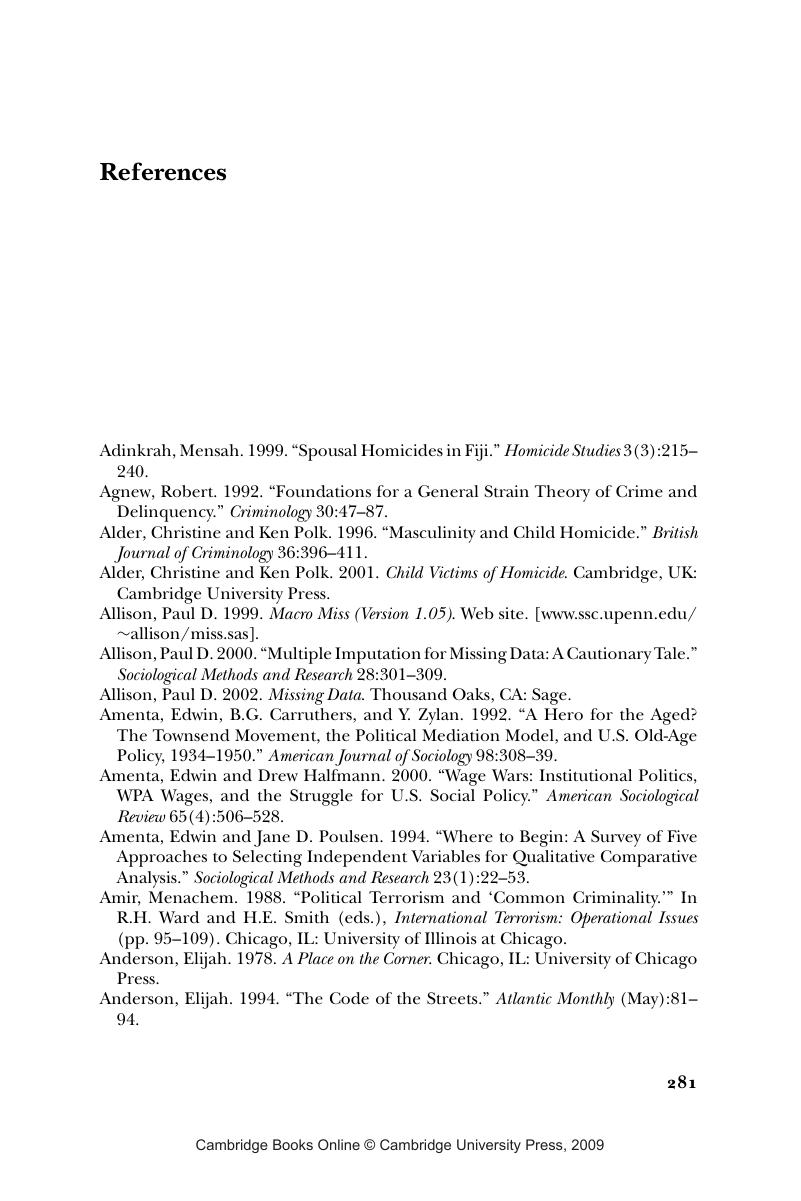Book contents
- Frontmatter
- Contents
- List of Figures
- List of Tables
- Preface
- Acknowledgments
- Rethinking Homicide
- 1 Introduction: Studying Homicide Situations
- 2 Theoretical Development
- 3 Data and Methodology for Studying Homicide Situations
- 4 The Empirical Distribution of Homicide
- 5 Instrumental and Expressive Motives in Homicide Situations
- 6 Gender Differences in the Structure of Homicide Situations
- 7 Change and Stability in the Structure of Youth Homicide
- 8 Racial Differences in Homicide Situations
- 9 Victim–Offender Relationships
- 10 Conclusions and Implications
- References
- Author Index
- Subject Index
- References
References
Published online by Cambridge University Press: 11 July 2009
- Frontmatter
- Contents
- List of Figures
- List of Tables
- Preface
- Acknowledgments
- Rethinking Homicide
- 1 Introduction: Studying Homicide Situations
- 2 Theoretical Development
- 3 Data and Methodology for Studying Homicide Situations
- 4 The Empirical Distribution of Homicide
- 5 Instrumental and Expressive Motives in Homicide Situations
- 6 Gender Differences in the Structure of Homicide Situations
- 7 Change and Stability in the Structure of Youth Homicide
- 8 Racial Differences in Homicide Situations
- 9 Victim–Offender Relationships
- 10 Conclusions and Implications
- References
- Author Index
- Subject Index
- References
Summary

- Type
- Chapter
- Information
- Rethinking HomicideExploring the Structure and Process Underlying Deadly Situations, pp. 281 - 306Publisher: Cambridge University PressPrint publication year: 2004



